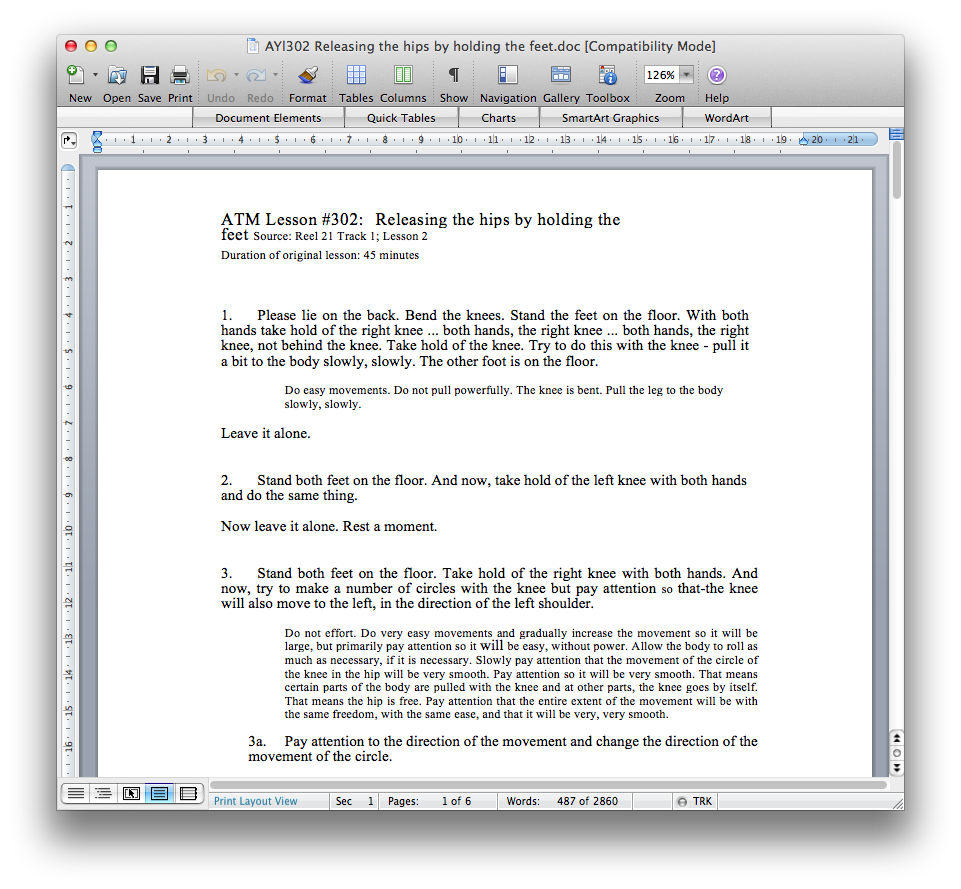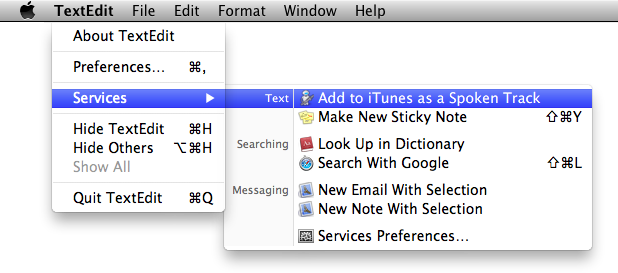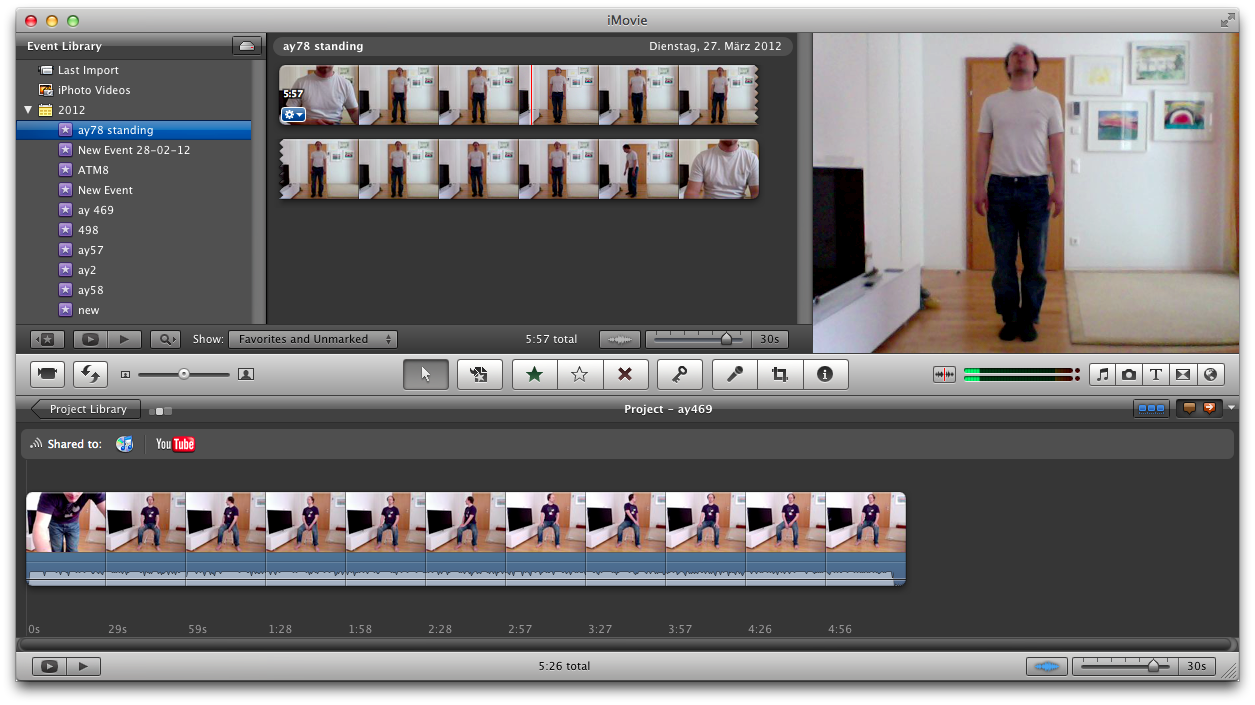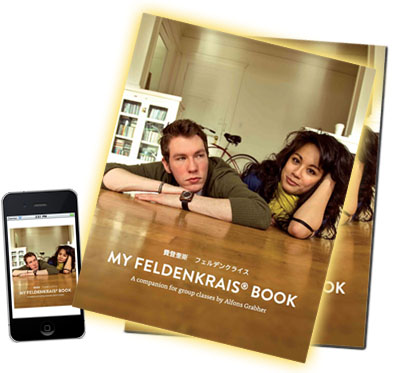I never teach from written notes. Too big the chance that there’s something missing in the notes. Too inconvenient to read and teach at the same time. Therefore I always prepare my lessons in advance, and always from original material (e.g. Alexander Yanai, San Francisco Evening Classes).However, preparing such lessons has always been a great burden to me. Before I started to study the Feldenkrais Method, I had a very poor memory movement sequences. This means, I was that guy in dance class who would be unable to remember even the simplest steps.For a couple of years it took me at least one full day to prepare one lesson (usually teaching 1 to 8 classes per month). Reading “Alexander Yanai” from paper and bringing it into real life has been an arduous process.It was just recently that I was able to streamline the process for myself. Now it gives me great joy to explore original lessons. I love this process and I’m using technology to help me.
Here I explain my process, with the example of an Alexander Yanai lesson::
Same week or the day before teaching
1. Pick a lesson
For the Alexander Yanai series (which consists of a whopping 550 lessons available in english) I’m always on the lookout for popular lessons or interesting suggestions. I find them on FeldyForum, facebook, in emails, on Feldy Notebook, blogs, personal conversations, or in advanced trainings.
2. Text-to-speech the lesson
I’m lucky to have all lessons on my computer in written format. Most of them I scanned in myself using the pdf-maker at my university. If you don’t have them in written format, you might want to read & record them yourself. Try to stay under 20 minutes per lesson.
For my written lessons, I open the lesson in TextEdit and have my Mac text-to-speech it. That’s as simple as click on “Add to iTunes as a Spoken Track”. For Windows there’s similar software available. For the Mac, it’s built in.
Usually this results in a 15-20 minute mp3. This I transfer to my iPod.
Update: nowadays I have all lessons on my iPod. And can have my iPod read the lesson to me without a prior conversion process.
3. Do the lesson myself + video it
Then I get on the floor (or on a chair etc) and do the lesson myself, listening to the mp3.
Depending on the difficulty of the lesson (and how often I have to pause/rewind the recording) this takes about 30 to 40 minutes.
4. Edit the video
Then I open the video in “iMovie” (on Windows a similar software would be “Microsoft Moviemaker”) for reviewing the lesson.
Some lessons I process further and upload on youtube. For doing so, I usually speed the movie up to 800% playback speed. This results in a 2-3 minute visual summary. This is send to my iPod.
5. Research about the lesson
I go on Feldy Notebook and see if anyone wrote about the lesson before. If I can’t find anything and I am really into it, I use google. Sometimes I wonder about specific medical questions (e.g. developmental or anatomical or physiological) and either use online tools (e.g. Zygote Body, Pubmed, …) or maybe I go to the local library to find a good book.
Sometimes I would ask a fellow practitioner on facebook or FeldyForum, or write to a specific practitioner with a specific questions.
6. Review the lesson on my own
Then I do the lesson for myself again, from my heart. I can check what I remember, adding my own ideas, playing with the process. This gives me the opportunity to get to know the lesson more deeply and to find connections I didn’t make the first time.
Also I check if I can remember every part of the whole sequence.
7. Listen to the mp3 again from a teachers perspective
Then I do the lesson guided by the mp3 again. This will remind me of moves I already forgot about or moves I did in the wrong order. Sometimes I have to listen to the whole mp3 two ore more times before I feel confident.
Also, from now on, I don’t listen from a student’s perspective anymore, but from a teacher’s perspective. Now I will hear things I didn’t notice before. The lesson will reveil some surprises and give me valuable hints what to look out for and what clues to give to my students later. I’m thinking
- “how did he say this?”,
- “what parts did he mention?” (e.g. did he say the heel, the toes, or the foot?)
- “what did he NOT mention?”,
- “why did he introduce this move, why here, and what is the principle?” etc
8. Watch the video
After that it’s also time to watch the video and to see how all this looks from the outside. This is very interesting and prepares me for things I will see in my class when I teach the lesson. Also it adds to my own self-image. Seeing a video of myself doing the lesson is very cool and gives me fresh perspective again.
Right before class
9. Last minute check
On my way to class I will quickly go through the sequence in my mind again, and watch the video on my iPod again, just to be sure.
10. In class
Teaching a Feldenkrais class is never a canned experience — it is a lively, creative, highly interactive process. Some times I can teach a lesson straight, sometimes I need to modify it, sometimes I have to create a completely different sequence.
Written by Alfons Grabher – travelsheep Jul 1, 2012, Author of “My Feldenkrais Book”



